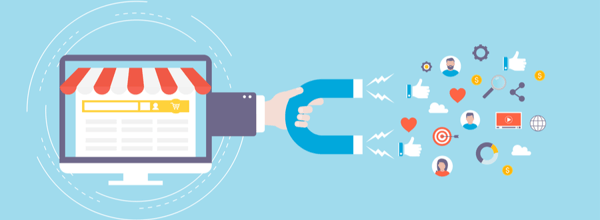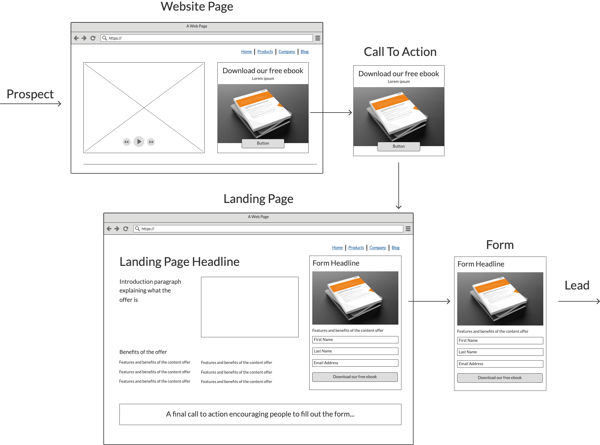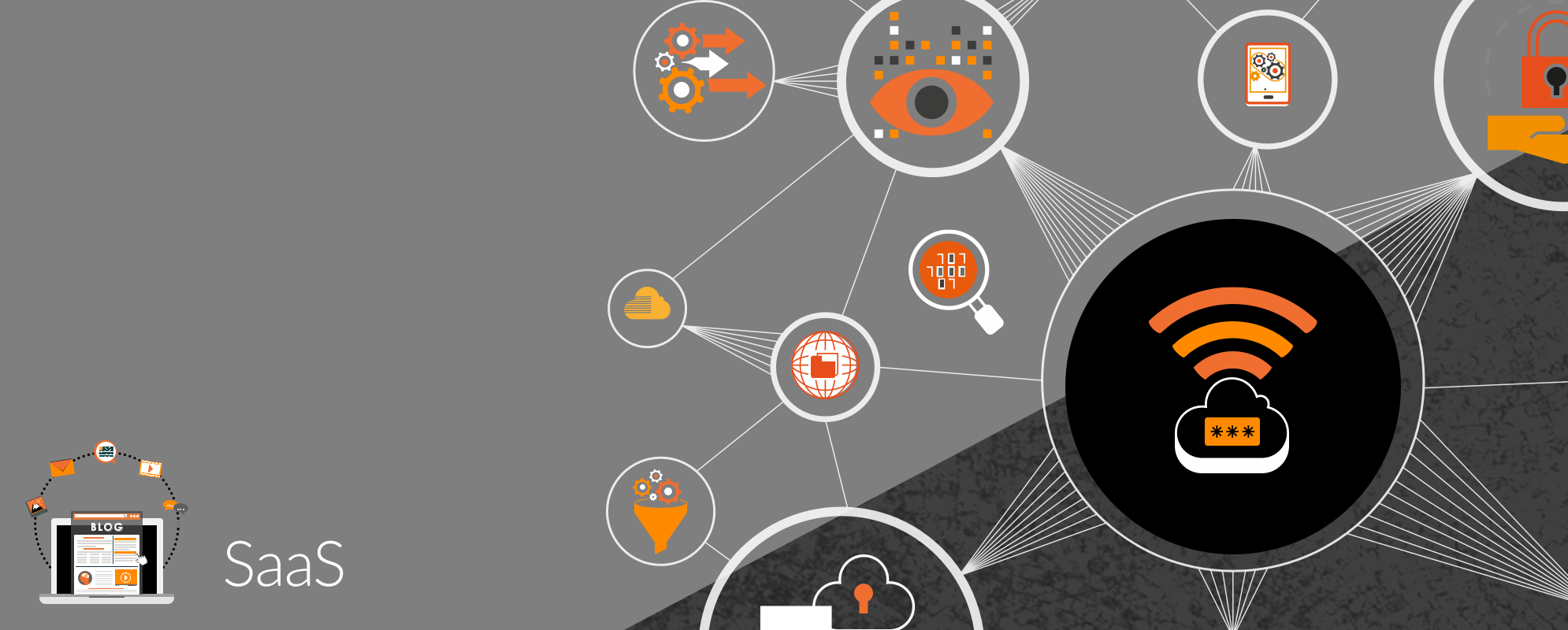As a SaaS marketer, no matter what you are promoting, you should always start with a well thought out marketing strategy. In fact we believe this so much that before we jump into marketing campaigns with a new client we always start off with a strategy meeting and then conduct the research so that we can put a proper plan of action in place.
Why is this so important?
To summarise my article titled 9 Reasons You Need a Marketing Strategy, the main reasons SaaS marketers should have a well thought out marketing strategy is to keep you and your team focused on achieving the desired outcome.
Have an Objective
For your SaaS business your marketing objective will be determined by where you are in your growth journey.
For a newer SaaS business that is in a high growth stage, it's likely that the digital marketing focus will on customer acquisition, therefore boosting web traffic and converting traffic to leads and trials would be the goal.
SaaS marketing activities such as writing blog posts, paid media, influencer marketing and SEO may be more relevant. Then once someone is on the site, having a strategy in place in order to convert them to become a lead
Once they capture the lead. They'll then want nurture the lead through email marketing and social media retargeting so that they to take a free trial or demo and then continue their journey so that they become full paying customers.
If you're more established software as a service business, you may be more focused on delighting existing customers than you are customer acquisition. Your content marketing may be aimed at your current client base ensuring they are using your product to the full capacity which will help to reduce churn and increasing customer retention and lifetime value.
Another key factor is on how you sell your SaaS product. Whether it's self serve through free trials, or whether you need to engage in a consultative sales process and have sales people reach out to your leads
Monitoring your performance
It will allow you to look to work out the KPI's that will help you to measure the success or failure of your marketing strategies and to make necessary adjustments. Your SaaS marketing strategy should be a living and breathing document that you review on a regular bases.
Keep track and release budget
Another big advantage of having a written plan is that it helps to release marketing budget. It you need approval from stakeholders, they want to see that you have the whole process from start to finish and have put some research behind your recommendations.
Keep Focus
Without a strategy in place you are at risk of jumping on the next bandwagon, spending time and money on random SaaS marketing tactics without any clear direction.
By very nature, people that work in SaaS companies then to be excited by new things. Especially if it's technical. Having a written plan will help prevent you becoming distracted by the latest fad.
So, what should be in your SaaS marketing strategy?
There are six key elements that we believe effective SaaS marketing strategies should contain:
-
Buyer persona
-
Understanding who is likely to become a SaaS customer
-
Attraction activity
- Finding the best way to get your target audience to your website.
-
Conversion paths
- How are you going to turn visitors into a leads or free trials?
-
Lead nurture
- Moving your potential customers so they become paying customers
-
Customer delight
- Successful SaaS businesses know how to keep customers as well as attract new ones
-
Analysis and reporting
- Understanding what is and isn't working in your SaaS marketing
Let’s have a look at each of these in turn.
1. Buyer personas

A buyer persona is defined as a semi-fictional representation of your ideal customer; based upon fact but with some educated speculation. It is effectively your target audience.
Crafting your buyer persona is the most important step in all your SaaS marketing. Any marketing message that you put out there should be targeted at a particular persona and the more groundwork you can do understanding your target persona, the easier it will be to write copy that resonates with the potential customers that you’re trying to attract into your business.
If you’re like the majority of SaaS companies, you will be thinking that you have multiple buyer personas. You’d be right. Most businesses do have multiple personas, but the key here is to focus on the word ‘ideal’ in the definition. Work on one buyer persona at a time, starting with your perfect client. Work on that persona until the lead generation for that segment is at a satisfactory level before you move on to the next one.
With buyer personas, one of the most important aspects to focus on are the problems and frustrations you can help solve. These problems should form the basis of all of your SaaS marketing including all the blog posts, videos, articles and other content you create. Always be thinking about who the content is serving and what problem it solves for the reader.
Bu understanding your buyer personas you can formulate your plan of how you're going to reach them. It may be the best SaaS marketing plan for you will be through digital marketing, using tactics such as Google Adwords, Facebook Ads, SEO,Email marketing and content marketing.
Or it may be that your marketing strategies need to be more aligned to their offline behaviour, so for example exhibitions and networking events.
You should focus your SaaS marketing campaigns around what you know about them, and that doesn't just mean the content, but where to promote and reach the prospects too.
Unfortunately, we see many SaaS companies that produce blog posts and other content that is all about them and their product rather than about the customer. You have to remember that your customers don't care about who you are, they care about what you can do for them.
To read more about how to create a buyer persona, you can download a free guide here and build out your persona with this template
2. Attraction activity

Once you understand who you wish to bring into your SaaS company, you’ve now got to think about how you are going to attract them to your website. Ultimately, you can break this down into two different types of traffic. Paid or unpaid.
With paid traffic, we’re talking about running some form of advertising such as Google Ads or social ads (LinkedIn, Facebook etc). Likewise sponsoring email blasts and paying to be on directory sites come under this category.
Be careful though with your paid activity. Monitor your costs and conversion rates closely to ensure that you get a positive return. It's really easy to allow budgets to run away and have a customer acquisition cost at a level that is not profitable .
You may need to take a multi-step approach to your paid marketing where you send website traffic to value-led content first, before sending them to your free trial or signup page.
When we talk about Unpaid traffic, also known as organic traffic usually we're referring to the free search engine traffic. (But social media and email generated traffic also falls under this banner). One of the best ways to acquire the web traffic needed is by increasing your content. Having a regular strategy for creating blog posts, articles, videos, and other useful value-based content
It's vital that your SaaS content marketing strategy is based around your buyer personas and what they are actually searching for. Understand their problems and the questions that they are asking and create content for those subjects. This way you'll provide more value to them and search engines will view you more favorably.
3. Conversion paths
A conversion path is the journey that your user should take in order to become a lead in your database. It consists of content that the reader is consuming, a content offer, a call-to-action (CTA), a landing page and a thank you page. The journey should look like this…

The user reads a blog post or article that is of interest. Throughout and at the end of the article, there a relevant CTAs placed at appropriate places. They click on the CTA that advertises your content offer and then they get taken to a page that encourages them to complete a form in order to download some valuable content.
Once your visitor fills out the form, enter their email address, they become a lead in your database. They are then taken to a thank you page where they can download the content offer as well as see a secondary CTA. They have now converted.
Depending upon your business model, you may decide that this step isn't necessary and that you can share sufficient information on the landing pages that will convince them to sign up for your free trial or demo.
Generally the software as a service businesses that have higher selling prices need multiple touch points with their prospects. They'll have more of a consultative approach to selling their product and need to concentrate their digital marketing efforts on generating leads and lead qualification.
In contrast the lower cost saas products will need digital marketing strategies designed to push people quickly to their free trial page and concentrate their efforts in lead nurture to move the prospect to become a full paying customer.
4. Lead nurture
The aim of generating leads is that you want to progress them to become a customer. But just because they have downloaded an eBook, accessed a trial or demo, doesn’t necessarily mean that they are ready to buy your product or want to speak to a member of your sales team. They are probably much earlier on in the buyer’s journey. Therefore your marketing strategy must involve a communications plan that will nurture the lead, keep their attention, enhance their interest for your product and encouraging them to take action.
The nurture can take place by a number of means: for example email, the use of remarketing ads on social media and Google Display Network or direct mail.
It’s also worth making a call and just asking something along the lines of, ‘I see that you downloaded an eBook from our website, what were you looking for help with?’, and see if you can start a conversation.
But do it in a helpful manner, ensuring that their query has been solved and use it as an opportunity to further assist the prospect. Offer to point them to another useful blog post, show them customer case studies and offer to run through a demo.
5. Customer delight
So now that they’ve bought you can forget about them and move on to the next prospect, right? NO - THIS IS SO WRONG!
Getting a new customer is a hard task, so once you have them, don’t neglect them. Make sure that their on-boarding process is extremely smooth. Write content that is aimed at assisting new users of your software, send them useful tips and videos. Create a Facebook group that’s exclusive to your customers. There’s lots of different ways that you can welcome them to your family of customers. SaaS marketing at this stage is about reducing churn and giving your customers an exceptional experience that will encourage them to stay with you for the long term as well as recommend others to your product.
6. Analysis and reporting

A good SaaS marketing campaign is never completed. It is one that you’ll continue to use and is evergreen in nature. In other words, it’s always live. As such, you’ll want to know that it’s performing well for your SaaS company and look for ways that you can improve the results.
SaaS marketers should be adept in analysing data and translating that data into action.
In this article, SaaS Marketing Metrics for ROI, we explain some key performance indicators (KPIs) you should be measuring that will help you determine your SaaS marketing success.
At a basic level, you'll want to be tracking
Visitors: how big is the audience that are actually seeing the assets that form part of the strategy?
Leads: how many people converted to become a lead?
Qualified Lead: how many of the leads became qualified through your nurture process?
Opportunities: how many people went through your sales process (assuming a person-to-person process)?
Customers: how many sales did we make?
Churn: How many customers are we losing or what is your customer retention rate?
From here, you can start working out your conversion rates and identify the priority areas to focus on to improve the results. For example, there’s no point working on the lead to qualified lead conversion rate if you don’t have enough people visiting and converting on your landing pages. When you identify these areas, this will help dictate your action points.
Put in place a review timetable so that you look at the metrics regularly and make constant improvements to your SaaS marketing.
In summary, remember my opening intro to this article: it’s important to have a well thought through, documented strategy for your B2B SaaS marketing. Without one you’ll end up jumping from one activity to the next without getting the results you need.
Getting success from your SaaS marketing really is about the proper planning that needs to be done before any implementation takes place.
Marketing SaaS businesses is something that we specialise in. If you’d like to talk about how we can help, then book a call using this link.
Stay Updated with Our Latest Insights
Get expert HubSpot tips and integration strategies delivered to your inbox.



